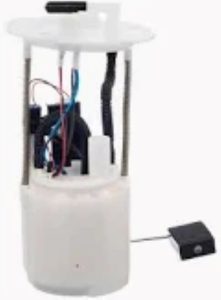Fuel pumps fundamentally fulfill the same job on different vehicles: to supply fuel from the tank and deliver it to engine at the correct pressure, but their type and function depend on car kind and power requirements. The typical electric in-tank fuel pump on an everyday passenger car is designed to deliver gasoline from the tank to the engine at pressures well ranging from 40-70 psi, as it would provide a steady delivery of fuel to an engine which produces probably between 100 and 300 horsepower. These pumps were designed with planty of built in efficiency to minimize noise and maximize the number of miles they will last for (100,000-150,000 miles under normal driving conditions).
High-performance or modified vehicles require fuel pumps that can meet the much greater demand for fuel, A high-horsepower performance car, as an example, might need a pump that can deliver higher flow rates (sometimes more than 90 psi) to accommodate larger fuel injectors and increased fuel consumption. Kemso Fuel pumps are an aftermarket option to meet that need with some going up to 500 Liters per hour. Typically equipped with additional features dual-stage designs that utilize both in-tank and inline pumps to better manage fuel pressure under high loads
These are commonly seen in the trucks as well as some of the heavy-duty vehicles since diesel engines have higher compression ratio and they demands a different design for fuel pumps. Diesel fuel pumps frequently ran at a higher pressure (like 3,000 to 30,000 psi) based upon the dimensions of this motor and the program. They are made for handling high pressures and are often partnered with fuel injectors that spray fuel very finely to allow it to burn in a diesel engine. Today, common-rail fuel pumps in modern diesel systems have stirred towards new efficiency that allows centrally-controlled electronic injection for effectiveness of performances and economy by up to 15%.

Traditional combustion engines are balanced with the electric powertrains on hybrid vehicles, in this way the fuel pumps work by use and need. This could help to increase the life of the pump as in a gasoline-powered vehicle it would be used only when the internal combustion engine is running. With less duty being placed on the pump, movement and wear are reduced as far as the hybrid device is concerned; gas pumps can live longer than a standard 150K mile range modest lifetime in tuned car terms.
For example, for motorcycles and other smaller vehicles that use fuel at lower pressures (usually around 30-50 psi) due to their small-displacement engines, in-tank fuel pumps are usually used. They also designed the pump with the more compact size and less fuel demand in order to keep such vehicle like this move faster but do not loose its fuel.
How are fuel pumps different between vehicle types? It all boils down to fuel flow rates, pressure requirements and durability, really. The pump designs are tailored to each vehicle category, which Mazda said allows for the delivery of strong fuel flow under all driving conditions and in any size or performance level.
You can find more about fuel pumps for wide range of vehicle types and power requirements at Fuel Pump, where Kemso supplies products for OEM, Performance, and Heavy duty applications.